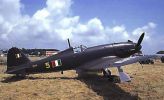
g55-02506 views
|
|
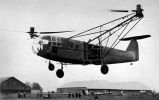
focke achgelis fa223504 views
|
|
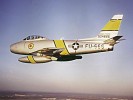
F-86 Sabre504 viewsThe first proposals for the North American Aviation F-86 Sabre were made in 1944, but construction was not begun until after World War II. Many elements of German jet design were implemented in the Sabre. The XP-86 prototype, which would become the F-86 Sabre, flew on 1 October 1947. It often was placed in combat against the superior Soviet MiG-15. Superior US pilot training versus Korean and Chinese training accounted for some of the US success in the air war. Other factors included Soviet pilots' reluctance to engage Americans over battlefields for fear of being captured. Technically, the Soviet Union was not involved in the Korean War, and as such could not afford captured pilots. The Sabre was the first U.S. production aircraft to be fitted with ejector seats. Approximately 9500 were constructed. Several are still held by private owners.
|
|

Dornier 335501 viewsAs the Second World War in Europe drew to a close, a powerful new twin- engined fighter was preparing to enter service with the Luftwaffe. This amazing machine was the piston-engined Dornier Do 335. Fitted with Daimler-Benz DB603A-2 engines delivering 1750 hp at take-off, the first example, Do 335 V1 (CP+UA), flew for the first time on 26 October 1943 from Mengen, Wurttemburg, with Flugkapitan Hans Dieterle at the controls. When the US Army overran the Oberpfaffenhofen factory in late April 1945, only 11 Do 335A-1 single seat fighter-bombers and two Do 335A-12 conversion trainers had been completed. A further nine A-1's, four A-4's and two A- 12's were in final assembly, and components and assemblies for nearly 70 more had been completed. Heinkel at Vienna had been unable to build any Do 335A-6 night fighters.
|
|
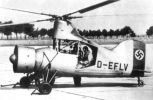
flettner-265499 views
|
|
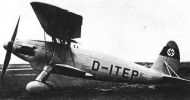
Arado Ar 68F497 viewsInitial deliveries of the Ar 68F were made to the Luftwaffe in the late summer of 1936. commencing with I/JG 134 'Horst Wessel'. By the outbreak of World War II most surviving Ar 68s had been relegated to advanced fighter trainer status with the Jagdflieger-schulen (fighter pilot schools).
|
|
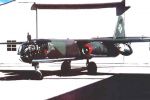
arado ar234491 viewsThe Ar-234 was originally conceived in early 1941 by an engineering team under Professor Walter Blume, director of the Arado aircraft company. Arado projected a maximum speed of 780 KPH (485 MPH), an operating altitude of almost 11,000 meters (36,000 feet), and a maximum range of 2,000 kilometers (1,250 miles). A total of 210 Ar-234Bs and 14 Ar-234Cs were delivered to the Luftwaffe, but with Germany in chaos, only a handful ever got into combat. A final inventory taken on 10 April 1945 listed 38 in service, including 12 bombers, 24 reconnaissance aircraft, and 2 night fighters. These aircraft continued to fight in a scattered and ineffective fashion until Germany surrendered on 8 May 1945. Some were shot down in air combat, destroyed by flak, sometimes their own, or bounced by Allied fighters when they came in to land.
|
|
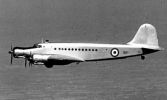
fiat g.122695L491 views
|
|
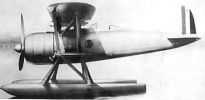
FIAT I CR 42490 views
|
|
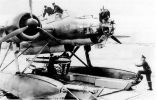
Heinkel He 115489 viewsThe He 115, constructed as a twin engine plane was very effective in it's role as mine-layer and torpedo-bomber (first flight in 1936).
In 1940 the He 115B saw service as a mine-layer, carrying a single magnetic mine of 920 kg. Airplanes of Küstenfliegergruppe 106 und 406 flew on a regularly basis mining missions at the east and south coast of Great Britain. At the end of 1940 the He 115 C appeared with heavy armament; a subversion had improved skids for landings on ice and iced snow. The C-4 was a version specialised for torpedo-attacks, which was used several times against the north-cape convoys.
|
|
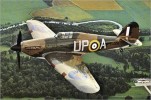
HAWKER HURRICANE Mk IIB488 viewsThe Hurricane bore the brunt of the fighting during the Battle of Britain &, of the 14,00 built, only three examples remain airworthy. This particular machine is painted to represent the aircraft of the late Squadron Leader Archie McKellar
|
|
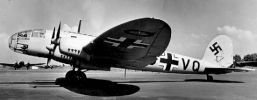
Heinkel He 116485 viewsThis aircraft was designed in 1936 as a high altitude aircraft for Lufthansa. The specified Hirth powerplants were not available and the V1 flew in 1937 on lower rated engines. Eight A-series mail carriers were built followed by the He 116R with rocket boost. The He 116R later flew 6,214 (10,000km) on June 30, 1938 non-stop. Six B-0 were delivered to the Luftwaffe in 1938 as long range photo recon aircraft but their low speed, lack of pressurization and lack of armament made them too vulnerable to use in enemy airspace and these airframes spent the remainder of their careers doing photographic work over Germany.
|
|
|
|